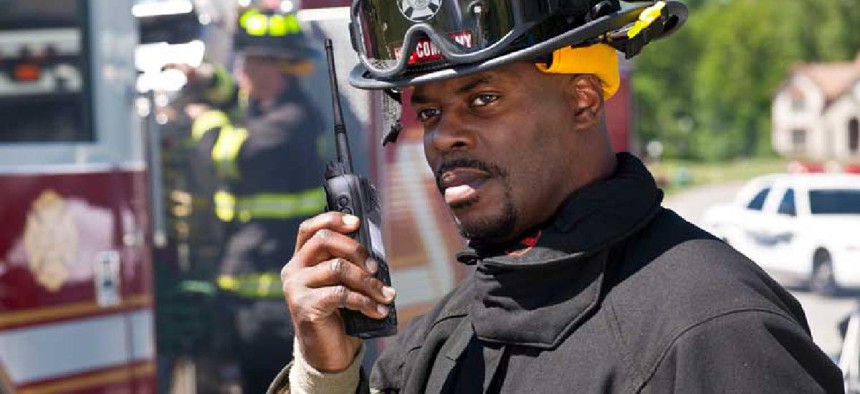A quiet, steady communications revolution has radically improved response in public safety


Connecting state and local government leaders
Service members and first responders are communicating with more speed, precision and unity than ever before in response to internal and external threats.
In moments of crisis, quick action and modern technology are critical to successfully respond to emergency events. For front-line professionals to be impactful, they need communication systems that function well, enable broader coordination, and are interoperable. Often, critical events push technology to higher standards, and industry partners play an important role in delivering solutions to meet unforeseen needs.
In the last 20 years, a quiet and steady communications revolution has been taking place; our service members and first responders are communicating with more speed, precision and unity than ever before in response to internal and external threats. They can now better anticipate, predict and respond to the myriad of evolving threats posed by foreign adversaries, cyber assailants and Mother Nature. With every threat or crisis, the industry reacts with solutions that meet the latest challenge.
An example of such reactionary solutions in action: Project 25, or P25, interoperable digital radio standards. While the technology was developed in 1989, it took the events of 9/11 and the subsequent analysis of the bi-partisan 9/11 Commission to advocate for user acceptance of open standards and the elimination of proprietary solutions. The commission echoed a recognized problem that local and national security agencies often could not communicate with each other.
Many agencies used antiquated, analog, proprietary radio systems that lacked interoperability and sufficient range. This put first responders at a communications disadvantage when responding to an attack or a natural disaster and placed them and their communities at risk.
Communications companies and several government agencies responded to the commission’s report and began to embrace P25 standards aimed at remedying these communications gaps.
In fact, P25 radio capabilities were deployed in more than 20 counties in southern Florida, over the years, including Miami Beach, the City of West Palm Beach and Miami-Dade Country. The radio system utilized in Miami-Dade, one of the largest counties in the country, provides daily public safety communications for 100 agencies and 32,000 users, showcasing the system’s interoperability. The system processes more than five million transmissions per month and supports the day-to-day communications for state, federal and tribal agencies in the region.
While these improvements are to be lauded, we cannot wait for the next crisis to hit before we start considering what innovations in communication the future might require.
This is why the government and public safety agencies have collaborated to create an interoperable broadband network. The resulting solution, FirstNet, built with AT&T, brought together the private and public sectors for increased functionality across the network, and in ways that allow for integration of P25 standards.
With the rollout and adoption of open standards and interoperability, integration of P25 standards and FirstNet into critical communications technology is crucial. It must be done with an eye toward both keeping costs down and allowing local governments to utilize their existing more interoperable communications systems. Agencies must be able to communicate with one another regardless of which systems they are using.
Parma, Ohio -- a Cleveland suburb of 80,000 -- is an excellent example of the benefits of FirstNet. The city had concerns with limited access and communication shortfalls, citing only one cell tower and difficulties communicating with neighboring police departments and first responders.
With their integration into FirstNet, Parma’s systems are interoperable with neighboring cities, and its first responders can use data transmission in a variety of emergency situations. During this year’s pandemic ambulances were able to conduct video conferences with emergency rooms so that equipment can be prepared for critically-ill patients before they arrive. Fire departments have deployed biometric monitors to gauge the health of their staff at the scene of disasters.
The threats facing the U.S. have certainly changed in two decades. The COVID-19 pandemic, cyber warfare and natural disasters dominate the news headlines, and the communications upgrades undertaken in recent years make our country better prepared to respond. We need a continued, steady communications revolution – to deliver seamless interoperable communication to professionals that need it most, no matter the crisis.
NEXT STORY: The New Plans to Remake Appalachia’s Economy




